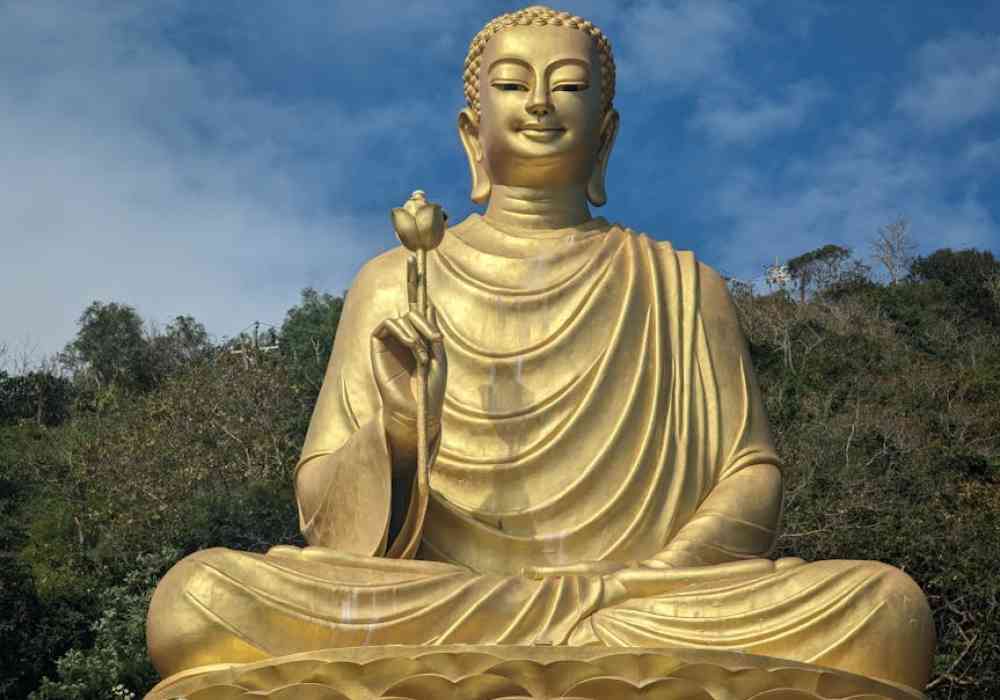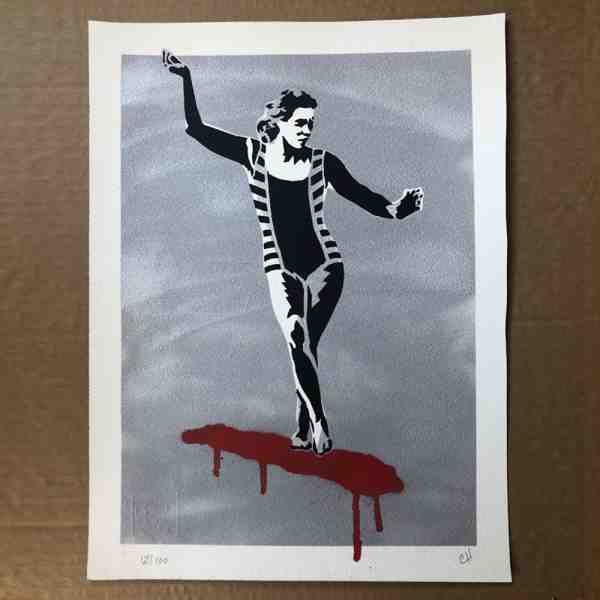From Stone to Canvas: The Artistic Evolution of Buddha
Showing the Artistic Buddha
The artistic buddha represents a fascinating journey through time and culture. From humble beginnings in the Indian subcontinent, to its spread across Asia, Buddha art has evolved into a rich mix of styles and symbols.
- Cultural Significance: Buddhist art isn’t just about aesthetics; it reflects deep spiritual beliefs and teaching.
- Historical Context: Originating a few centuries after Siddhartha Gautama, early art was aniconic, evolving to depict Buddharūpa (Buddha images) later on.
- Artistic Evolution: From stone carvings to intricate paintings and modern interpretations, Buddha’s image continues to inspire artists worldwide.
As Chris Higgins, a creator deeply inspired by Buddha’s imagery and founder of Handshucked Art and Designs, my work merges these timeless themes with modern styles, celebrating the artistic buddha in unique ways. Let’s explore how these elements intertwine in Buddha’s enduring artistic journey.
The Origins of Buddha Art
The origins of Buddha art take us back to a time when the artistic buddha was not depicted in human form. This early period, known as the aniconic phase, relied on symbols rather than direct representations of the Buddha. Artists used aniconic symbolism to convey his presence. Common symbols included a pair of footprints, an empty throne, or a wheel—each representing key aspects of his teachings and life.
Early Representations
During the 2nd to 1st century BCE, the focus shifted slightly with the creation of votive tablets and friezes. These artworks often adorned stupas, which are large dome-like structures housing sacred relics. Stupas played a crucial role in early Buddhist art, as they were the central monuments in Buddhist monastic complexes. Pilgrims would travel great distances to visit these sites, drawn by the spiritual significance of the relics they contained.
Stupas and Relics
The relics of the Buddha, which included portions of his cremated remains, were divided and enshrined in stupas across the Indian subcontinent. These structures were not only religious symbols but also served as focal points for community gatherings and spiritual reflection. The design of stupas often included stone railings and gateways embellished with relief sculptures that depicted scenes from the Buddha’s life and previous lives, known as jatakas.
Transition from Symbolism to Representation
As time progressed, the depiction of the Buddha evolved from symbolic to anthropomorphic forms. This transition marked the beginning of the iconic phase in Buddhist art, where the Buddha was represented in human form. This change was significant, setting the stage for the diverse artistic styles that would emerge in regions such as Gandhara, Mathura, and Gupta, which we will explore in the next section.
The origins of Buddha art, rooted in symbolism and early representations, laid the groundwork for the rich and varied expressions of the artistic buddha that followed. These early forms continue to influence contemporary interpretations, connecting the past with the present in a seamless artistic journey.
The Three Schools of Artistic Buddha Representation
The evolution of Buddha art is a fascinating journey through different styles and cultural influences. Three major schools—Gandhara, Mathura, and Gupta—stand out for their unique contributions to the depiction of the artistic buddha.
Gandhara: A Fusion of Cultures
The Gandhara school emerged in the north-western region of the Indian subcontinent, heavily influenced by Hellenistic art. This influence came from the conquests of Alexander the Great in 332 BCE, which introduced Greek artistic elements to the region.
Key Features of Gandhara Art:
- Realistic Human Figures: Borrowing from Greek art, Gandhara artists created lifelike representations of the Buddha, with detailed facial features and naturalistic body proportions.
- Hellenistic Elements: The use of wavy hair, draped clothing, and sandals are reminiscent of Greek statues.
- Narrative Reliefs: These artworks often depicted scenes from the Buddha’s life, using storytelling techniques similar to those found in Greek art.
Mathura: Indigenous Inspiration
In contrast, the Mathura school developed in central India and drew inspiration from indigenous traditions. It flourished under the Northern Satraps and later, the Kushan Empire.
Key Features of Mathura Art:
- Symbolic and Simplified Forms: Mathura artists favored more symbolic and less detailed representations compared to Gandhara.
- Local Elements: The art featured traditional Indian motifs, such as the lotus seat and the wheel on the palm.
- Robust Figures: Unlike the more slender figures of Gandhara, Mathura’s Buddhas were depicted with broad shoulders and a more robust physique.
Gupta: The Classical Synthesis
The Gupta period is often referred to as the “Golden Age” of Indian culture, and its art represents a synthesis of the Gandhara and Mathura styles.
Key Features of Gupta Art:
- Idealized Forms: Gupta art perfected the depiction of the Buddha as an idealized human figure, emphasizing serenity and grace.
- Refined Elegance: The style combined the naturalism of Gandhara with the symbolic elements of Mathura, creating a more refined and balanced representation.
- Iconographic Canon: Gupta art set the standard for subsequent Buddhist art, with the Buddha often shown in meditative poses and serene expressions.
Hellenistic Influence Across Schools
The Hellenistic influence was not confined to Gandhara alone. It permeated other regions, affecting the way artists approached the depiction of divine figures. This cross-cultural exchange enriched the artistic vocabulary of the time, leading to a more diverse expression of the artistic buddha.
These three schools—Gandhara, Mathura, and Gupta—each contributed to the rich mix of Buddhist art, influencing how the Buddha has been represented across cultures and time. Their unique styles continue to inspire modern interpretations, bridging ancient traditions with contemporary creativity.
The Transition to Human Form
The transition from symbolic to human representation in Buddha art marked a significant shift in the portrayal of the artistic buddha. This change is best exemplified through the concept of Buddharūpa, which refers to the anthropomorphic depiction of Buddha, allowing artists to convey his teachings and stories through a human form.
Buddharūpa: The Human Representation
In the early stages of Buddhism, the Buddha was often represented through symbols like the Bodhi tree, footprints, or the Dharma wheel. However, as Buddhism spread and evolved, the desire for a more relatable, human form of the Buddha emerged. This led to the creation of Buddharūpa, where the Buddha was depicted as a serene and enlightened figure, embodying both human and divine qualities.
Gandhara and Gupta Art: Bridging Cultures
Gandhara Art played a pivotal role in the transition to human form. Influenced by Greek art, Gandhara artists crafted realistic and detailed sculptures of the Buddha. The wavy hair, draped robes, and lifelike expressions were reminiscent of Greek statues, creating a fusion of styles that was both innovative and accessible.
In contrast, Gupta Art synthesized elements from both Gandhara and Mathura traditions. The Gupta period is often hailed as a “Golden Age” for its idealized depictions of the Buddha. These artworks combined the naturalism of Gandhara with the symbolic elements of Mathura, resulting in serene and graceful images that became the standard for Buddhist art across Asia.
Narrative Scenes: Telling Buddha’s Story
Artists also began to incorporate narrative scenes into their works. These scenes depicted key events from the Buddha’s life, such as his enlightenment under the Bodhi tree or his first sermon at Sarnath. By illustrating these stories, artists provided a visual narrative that helped convey Buddhist teachings to a broader audience.
Mudras: The Language of Gestures
Mudras, or symbolic hand gestures, became an essential part of Buddhist art, adding layers of meaning to the depictions of the Buddha. Each mudra represents a specific aspect of Buddha’s teachings or life events:
- Dharmachakra Mudra: Symbolizes the turning of the wheel of Dharma and is associated with teaching.
- Bhumisparsa Mudra: Represents the moment of enlightenment, with the Buddha touching the earth to witness his awakening.
- Dhyana Mudra: Reflects meditation and the unity of wisdom and compassion.
These gestures, combined with the human form, allowed artists to communicate complex spiritual concepts in a simple and relatable way.
As the depiction of the artistic buddha evolved from symbolic to human forms, it opened new avenues for storytelling and expression. This transition not only enriched Buddhist art but also made it more accessible to people across different cultures and time periods.
This artistic evolution continues to inspire modern interpretations, blending ancient traditions with contemporary creativity.
Artistic Buddha in Modern Times
The artistic buddha has taken on new forms and meanings, reflecting contemporary interpretations and global influences. Artists around the world are finding innovative ways to blend ancient Buddhist traditions with modern art forms, creating pieces that resonate with today’s audiences.
Contemporary Interpretations
Modern artists often draw inspiration from traditional Buddhist art while incorporating contemporary styles and materials. From street art to digital installations, the image of the Buddha is being reimagined in ways that speak to current societal issues and personal introspection. For example, in the UK, the “A Lotus in Flower” festival highlighted various Buddhist art practices, showcasing how modern artists are engaging with Buddhist themes.
Global Influence
The global spread of Buddhism has allowed the artistic buddha to be interpreted in diverse cultural contexts. In the Philippines, for instance, Buddhist artifacts from the 9th century show Vajrayāna influences, highlighting a blend of local and Buddhist artistic practices. Similarly, the findy of a Buddha statue in Berenike, Egypt, underscores the historical reach of Buddhist art and its ability to adapt to different cultural settings.
Modern Art Forms
Artists today are using a variety of mediums to express the essence of the Buddha. Video installations by artists like Bill Viola explore Buddhist concepts of life and death, while sculptors like John Connell use materials like bronze and wood to create tactile, thought-provoking pieces. These modern art forms invite viewers to engage with Buddhist teachings in new and interactive ways.
The Role of Technology
Technology has also played a significant role in the evolution of Buddhist art. Digital art and virtual reality experiences allow for immersive storytelling, bringing the teachings of the Buddha to life in dynamic and engaging formats. This intersection of tradition and technology offers a fresh perspective on ancient wisdom, making it accessible to a digital-savvy audience.
The artistic buddha continues to evolve, reflecting the dynamic interplay between tradition and innovation. As artists reinterpret Buddhist themes through contemporary lenses, they contribute to a rich and diverse global mix of Buddhist art. This ongoing evolution ensures that the teachings of the Buddha remain relevant and inspiring in the modern world.
Frequently Asked Questions about Artistic Buddha
What are the 3 schools of thought for artistic representation of Buddha?
The artistic representation of Buddha is primarily influenced by three schools: Gandhara, Mathura, and Gupta.
- Gandhara: This school of art emerged in what is now Pakistan and Afghanistan. It is known for its unique blend of Greek and Buddhist artistic traditions, often referred to as Greco-Buddhist art. The Gandhara style features realistic human figures, wavy hair, and detailed drapery.
- Mathura: Originating in northern India, Mathura art is characterized by its indigenous Indian style. It often depicts the Buddha with broad shoulders and a serene expression, wearing thin muslin robes. This school emphasized the spiritual aspects of Buddha’s life through symbolic representations.
- Gupta: The Gupta period is often considered the golden age of Indian culture. Gupta art refined the earlier styles, creating a more idealized and harmonious representation of the Buddha. The focus was on spiritual grace and tranquility, often using smooth lines and balanced proportions.
What is the meaning of Buddha art?
Buddha art carries deep symbolism and cultural significance. At its core, it represents the journey to enlightenment and the teachings of the Buddha. Each element in Buddha art, from the pose to the accessories, holds symbolic meaning.
- Symbolism: Common symbols include the lotus flower, representing purity and spiritual awakening, and the wheel, symbolizing the cycle of life and the teachings of Dharma.
- Cultural Significance: Buddha art serves as a spiritual guide, inspiring followers to seek inner peace and wisdom. It also reflects the cultural and historical contexts in which it was created, showcasing the diverse ways in which Buddhist teachings have been interpreted around the world.
How to identify a Buddha in art?
Identifying a Buddha in art involves recognizing specific symbols, physical characteristics, and mudras (hand gestures).
- Symbols: Look for iconic symbols like the lotus, wheel, and Bodhi tree. These elements are often included in the artwork to convey deeper meanings related to Buddha’s teachings.
- Physical Characteristics: Buddha figures typically have elongated earlobes, a symbol of renunciation of worldly possessions, and a protuberance on the head, known as the ushnisha, representing spiritual wisdom.
- Mudras: These are significant hand gestures that convey specific teachings or moments in Buddha’s life. For example, the Dharmachakra mudra, with hands held near the chest, signifies teaching. The Bhumisparsa mudra, with one hand touching the earth, represents Buddha’s enlightenment.
Understanding these elements can help you appreciate the rich layers of meaning in Buddha art, whether in ancient stone carvings or modern digital renditions.
Conclusion
At Handshucked Designs, we take pride in celebrating the artistic evolution of Buddha through our unique interpretations. Our approach combines traditional elements with contemporary flair, creating pieces that resonate with both history and modernity.
Our distinctive artworks draw inspiration from the rich mix of Buddha’s artistic journey. From the early aniconic symbols to the detailed human forms of later periods, we incorporate these historical influences into our designs. This blend not only honors the past but also brings a fresh perspective to Buddha art.
Handshucked Designs is more than just a creator of art; we are storytellers. Each piece we craft tells a story of cultural significance and spiritual insight. Our Buddha-themed artworks aim to inspire and encourage reflection, much like the teachings of the Buddha himself.
Whether you’re drawn to the serene expressions of traditional Buddha figures or the vibrant colors of our modern interpretations, you’ll find something that speaks to your personal journey. Our commitment to quality and authenticity ensures that every piece is a genuine reflection of the Buddha’s enduring legacy.
Explore our collection here and find how our unique interpretations of Buddha art can transform your space into a sanctuary of peace and enlightenment.






